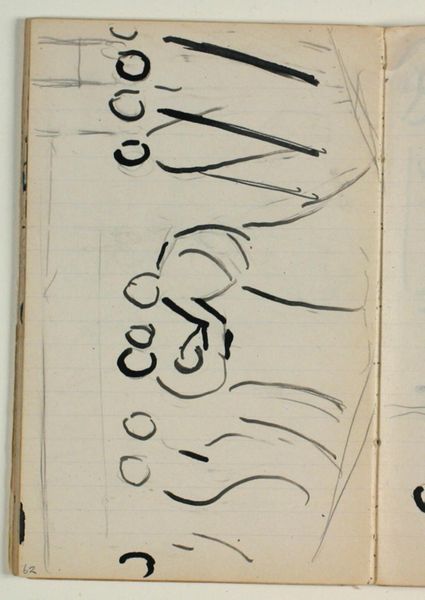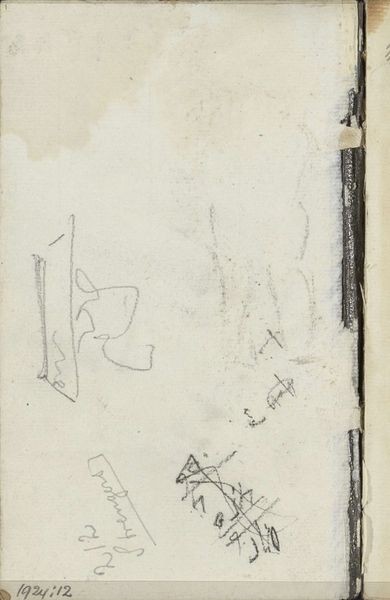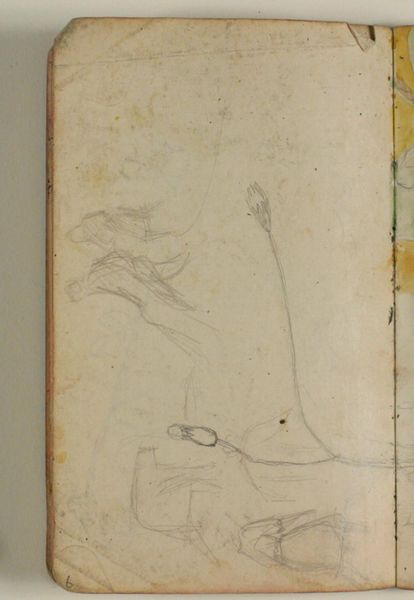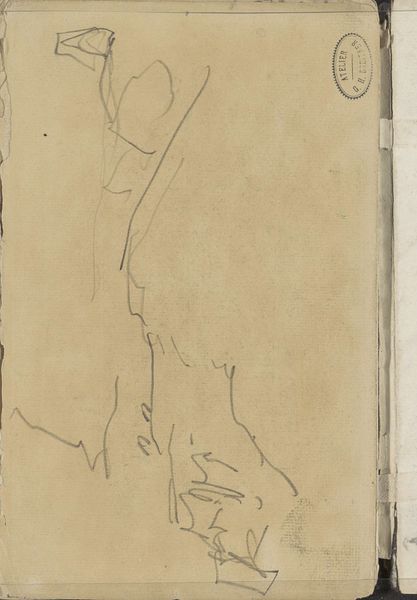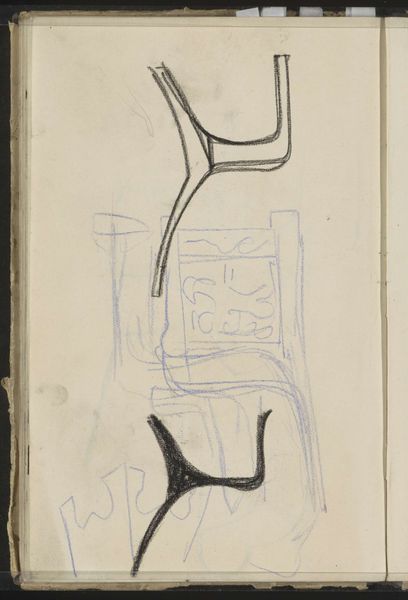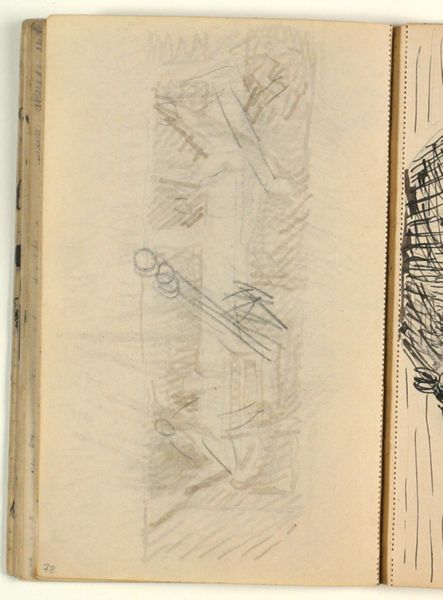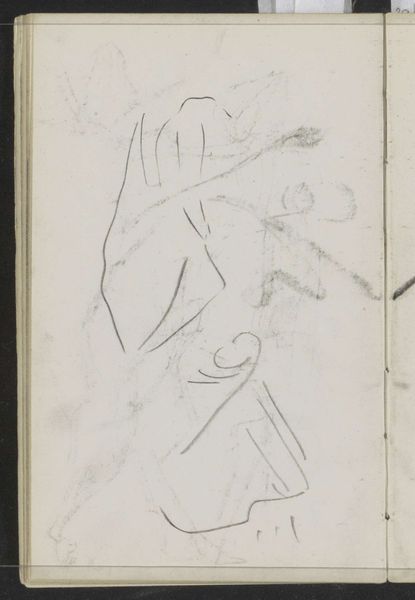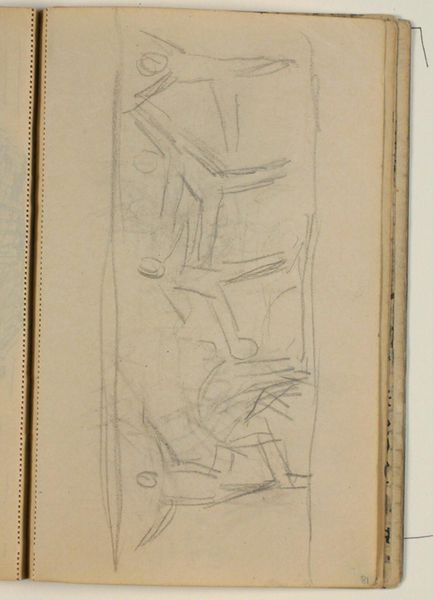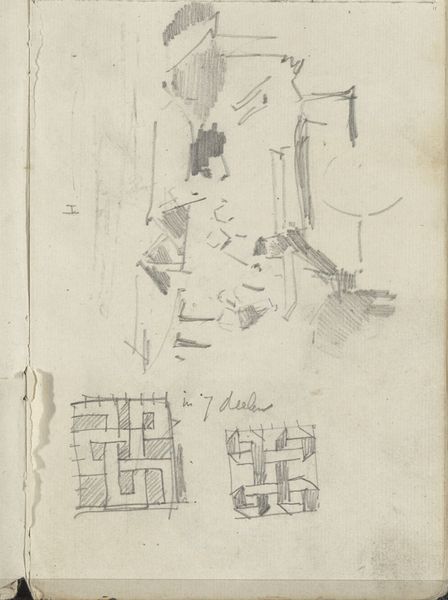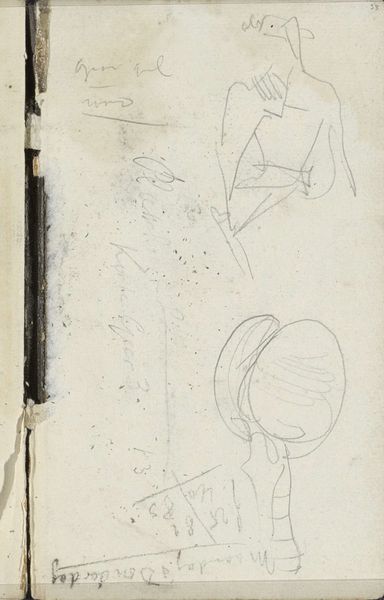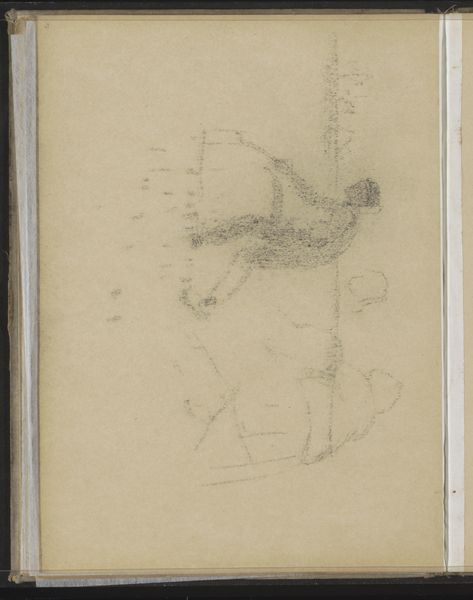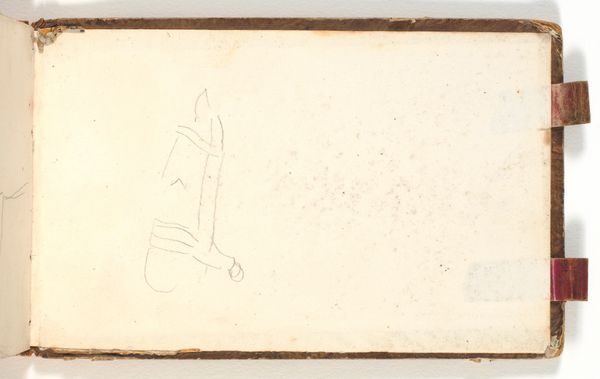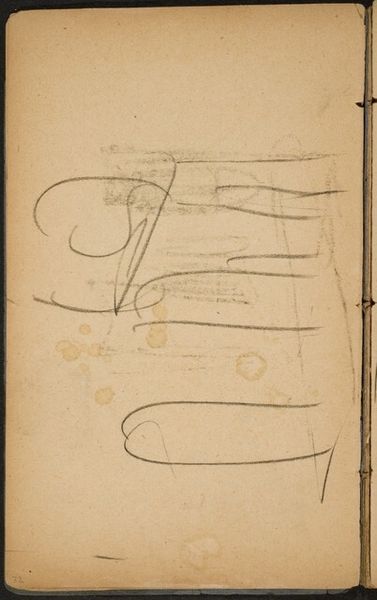
drawing, pencil
#
drawing
#
figuration
#
pencil
#
modernism
Curator: This is “Figurskitser,” or "Figure Sketches" by Niels Larsen Stevns, dating from between 1932 and 1935. It's a modernist pencil drawing currently held at the SMK, the National Gallery of Denmark. Editor: Immediately striking! There’s a sort of frenetic energy, a beautiful capture of raw form and motion. The contrast between the bold outlines of some figures and the lighter sketch-work creates depth, almost like looking at different temporal layers simultaneously. Curator: Indeed. Sketches such as these are valuable, shedding light on the artist’s creative process, moving away from conventional art which often masked preparatory efforts. By making the process visible, artists allowed a new discourse in the public sphere. Editor: Precisely. Looking closer, the economical use of line is incredible; each stroke seems to perfectly capture weight and gesture. The negative space is equally crucial, delineating forms with suggestive power rather than exhaustive detail. I notice how one of the figures reminds me of acrobats bending and balancing. Curator: That interpretation is evocative when considering how the circus served as a popular subject during that period. Beyond their visual appeal, performances served as social spaces and were a microcosm of the society of that time. Editor: Absolutely. There's something almost childlike and pure about the gestural quality. The materiality – pencil on paper – amplifies the directness, conveying intimacy. The quick application makes you feel you are sitting next to the artist. Curator: Seeing sketches such as this reminds us how critical Niels Larsen Stevns was to Danish art history. He was one of several artists committed to exploring modernity during an interwar period punctuated by significant political upheaval. These more avant-garde gestures can easily get lost if we solely focus on salon works that uphold established values. Editor: Yes, this brief study invites the eye to follow a dance of forms; it truly speaks volumes without needing to shout. Curator: It shows us art's capability to be a continuous work in progress—both by the artist and for those engaging with the artwork.
Comments
No comments
Be the first to comment and join the conversation on the ultimate creative platform.
